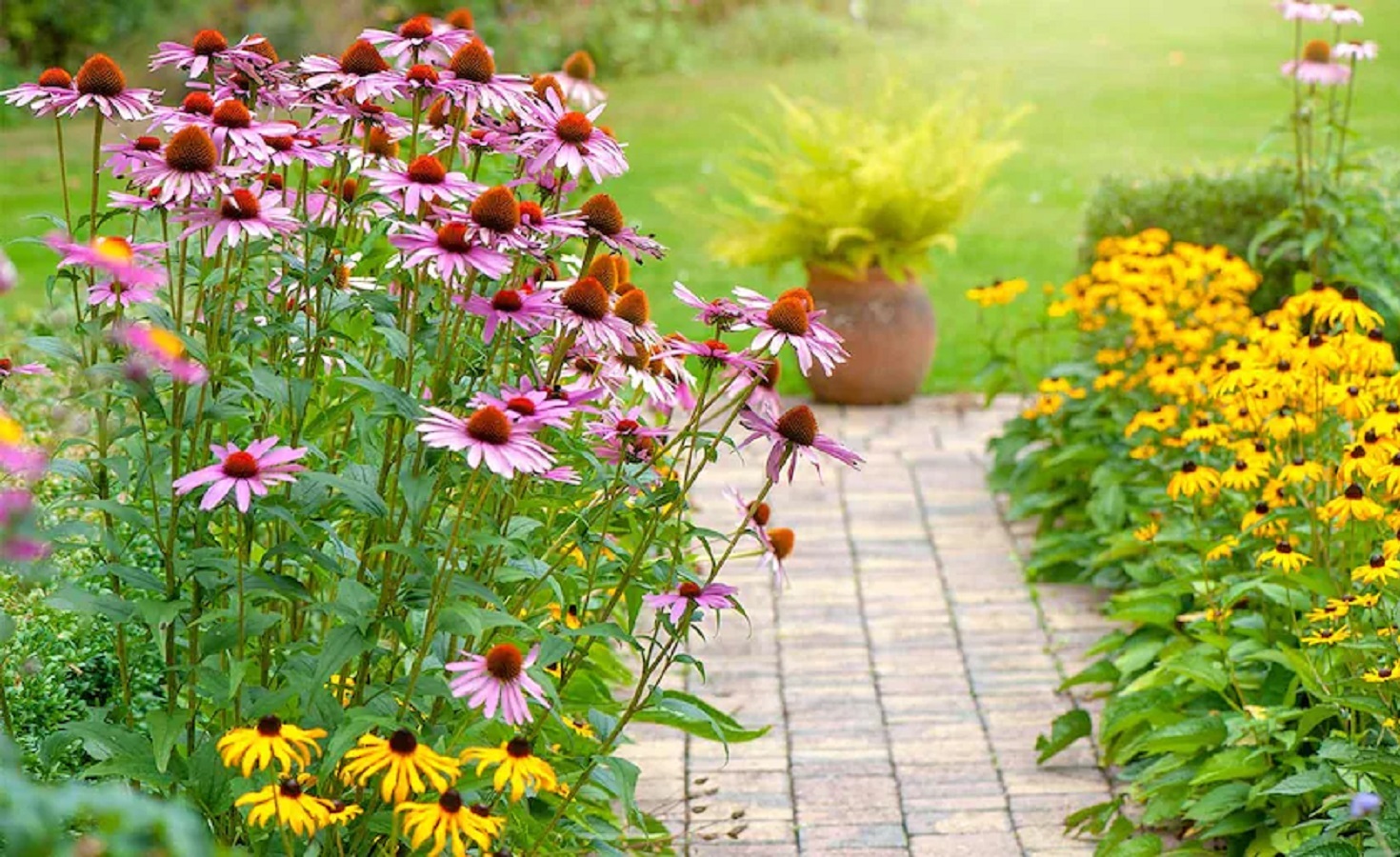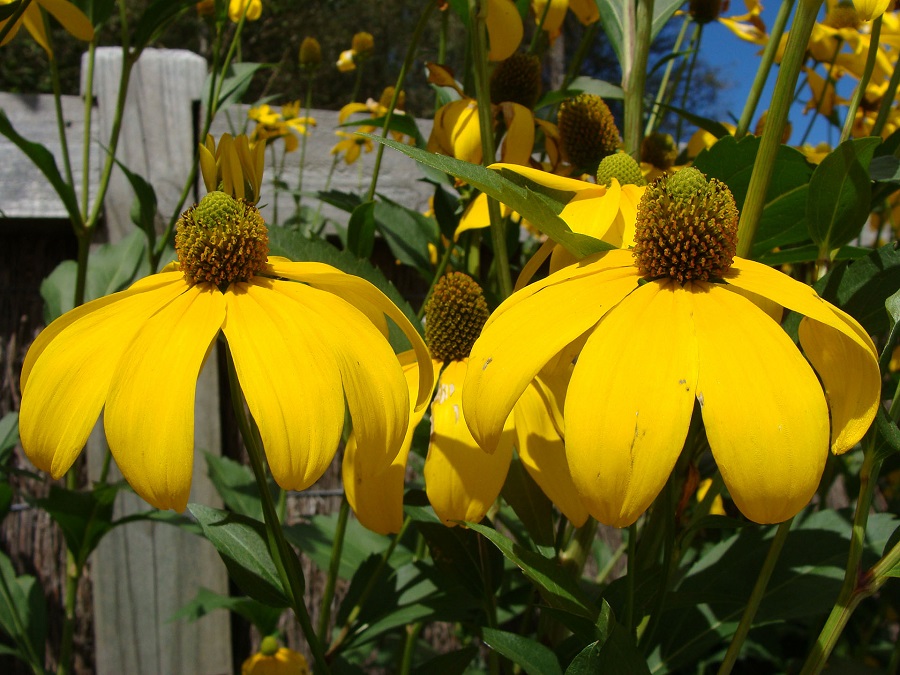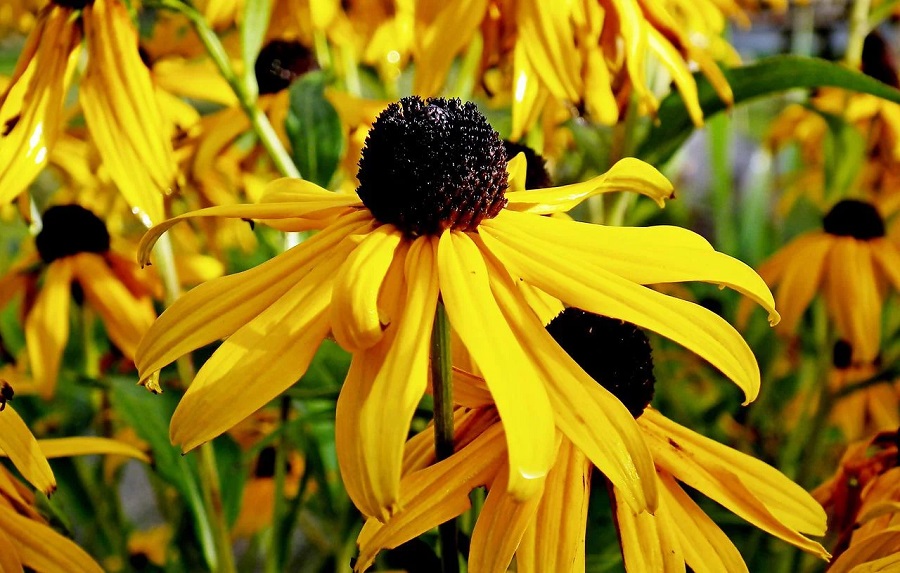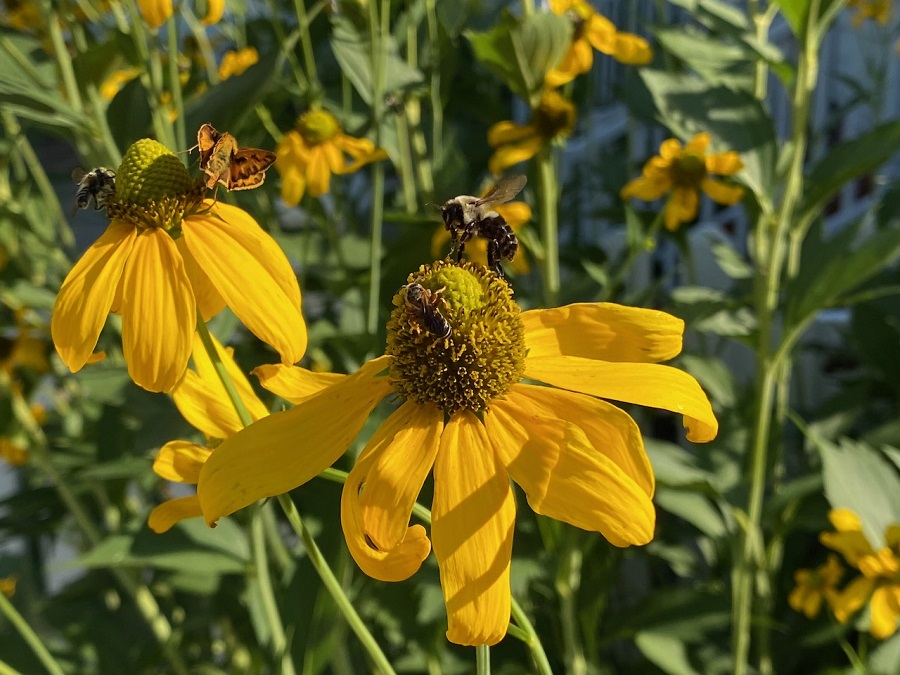How to Care for Coneflowers? Learn About Rudbeckia Varieties
Rudbeckia or coneflower is often mistaken for a sunflower. While some types are, in fact, similar in color, their general appearance is quite different - rudbeckias are more delicate. Rudbeckia has many varieties which look alike, but have different colors. They occur all over the world. Are you wondering if it's a good choice for your garden? Find out by reading this article.

Rudbeckia – what kind of plant is it?
Rudbeckia (Rudbeckia) is one of the most common plants appearing in home yards. It’s also referred to as echinacea or coneflower. It’s a perennial originating in North America, although currently it’s popular across all continents – especially in Europe.
Rudbeckia grows up to 70-100 cm tall, regardless of the provided conditions. For this reason, it’s a perfect plant for flowerbeds located around the house. What’s more, not only its flowers are noteworthy, but the wide leaves as well. In some varieties, they are covered with delicate hair.

Rudbeckia – worth-having varieties
Rudbeckia can be divided into 3 popular plant groups. They are:
- rudbeckia fulgida, commonly known as orange coneflower,
- rudbeckia laciniata, known as cutleaf coneflower,
- rudbeckia hirta, referred to as black eyed Susan.
Orange coneflower (Rudbeckia fulgida) has the most dwarf varieties. It’s a big advantage in small gardens. In this case, the plant’s height doesn’t exceed 40 cm. The species blooms for a long time – beginning in July, and finishing with the coming of first frosts.
Cutleaf coneflower (Rudbeckia laciniata) looks quite different from the variety mentioned above. It has a larger and more bulbous middle, which doesn’t stand out against the petals. In nature, this plant often grows on meadows and in places nearby water reservoirs.
Black eyed Susan (Rudbeckia hirta) is considered the most beautiful of all varieties. It develops huge flowers which appear in June. Unfortunately, it’s an annual.

What is the best soil for rudbeckias?
Rudbeckia is quite a demanding plant regarding the soil it grows in. Fertile, loose and permeable ground is the best for this species. The pH is also important, although coneflowers are quite tolerant. They can grow in soils of the following pH levels:
- neutral,
- slightly alkaline,
- slightly acidic.
What is the best location for rudbeckias?
Regardless of the rudbeckia variety you pick, the plant needs the same conditions in each case. The plant grows best if exposed to full sun. A sunny location is a guarantee of a fast growth and rich blooming.
When planting coneflowers in full sun, you have to take care of the soil’s moisture levels. The flowers might need frequent and intense watering.

Rudbeckia – cultivation needs and basic care
Rudbeckias such as black eyed Susan don’t have any complicated care needs. After establishing the basic conditions, you only have to remember about two important rules:
- generous watering,
- intense fertilizing.
As for the first issue, it’s typically not a problem at all, but many people wonder about what type of fertilizer to use and when to do it. Compost is the best option. We recommend using it at the first stage – when planting the coneflowers in flowerbeds. Then, the natural fertilizer is used during the entire duration of spring, which strengthens the coneflowers and prepares them for the blooming season.
Experienced gardeners have certain methods for making the plants bloom longer – you can use them as well! Simply deadhead the flowers that finished blooming – and do it regularly.

Do coneflowers look good with other plants in the garden?
Yellow coneflowers look perfect if planted along with their purple counterparts – echinaceas. These plants can grow together in harmony, as their requirements for location and soil are the same.
Some gardeners claim that rudbeckia doesn’t tolerate other species growing nearby. Because it’s quite demanding, it might compete with them for nutrients in the soil, and water. For this reason, it’s recommended to separate it from other flowers.
How to propagate coneflowers?
Rudbeckia is not difficult regarding its propagation. The best method requires dividing the root mass, but it can be done with at least few-years-old plants. One can also try to retrieve rudbeckia seeds, but it’s not always possible.
Rudbeckia – diseases and pests
Powdery mildew is the biggest threat to rudbeckia. It’s a disease which causes white powder on the leaves. You can control it successfully, especially at the initial stages of the problem. Sprays with copper sulfate are needed, in this case.
As for pests, aphids are the only real threat to coneflowers. Most varieties are quite resistant to them, though.

📍 What does a rudbeckia look like?
Rudbeckia is a plant from the asteraceae family, which is often compared with sunflowers. Its middle is distinct, with petals growing out of it. Depending on the variety, it can grow from 40 to 100 cm tall.
📍 When to plant coneflowers?
Coneflowers are planted in pots or special containers in February. The seedlings have enough time to grow and become strong. The plants are moved into soil in May or between May and June, if the conditions are suitable.
📍 When to cut rudbeckias?
Rudbeckias should be cut entirely after their blooming season. Cut the plants above the ground, so they can regrow in spring.
📍 When do coneflowers grow?
Coneflowers seeded in February grow quite fast – after just a few weeks. The seedlings should be watered regularly and kept in a warm place.
Featured articles




